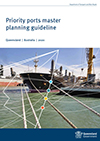Master planning for priority ports
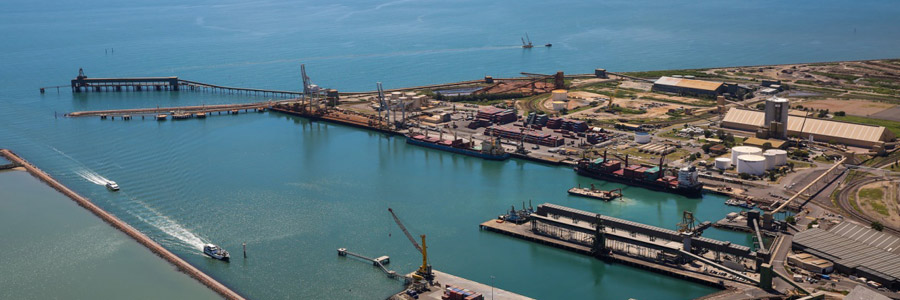
Master planning for priority ports is a port-related action of the Reef 2050 Long-Term Sustainability Plan (Reef 2050 Plan) and mandated under the Sustainable Ports Development Act 2015 (Ports Act).
About priority port master planning
Port master planning guides sustainable development of priority ports balancing long-term economic growth, job creation, environmental values and community interests, while providing protection for the Great Barrier Reef.
Historically, regulation of port planning in Queensland has been limited to land use planning on strategic port land (SPL)—the land owned or controlled by a port authority under the Transport Infrastructure Act 1994.
The Ports Act provides a master planning process for Queensland’s priority ports—the ports of Gladstone, Townsville, Hay Point/Mackay and Abbot Point.
The Queensland Government is leading priority port master planning, working closely with port authorities, local governments and other key stakeholders. Transparent public consultation will be conducted as an important part of the priority port master planning process.
Objectives of port master planning
Priority port master planning will assist the Queensland Government to:
- concentrate development in priority ports leading to more effective management of port development in the Great Barrier Reef World Heritage Area
- efficiently use existing port and supply chain infrastructure
- identify and protect land and infrastructure critical to the effective operation and future expansion of priority ports
- facilitate economic development and job creation in regional areas.
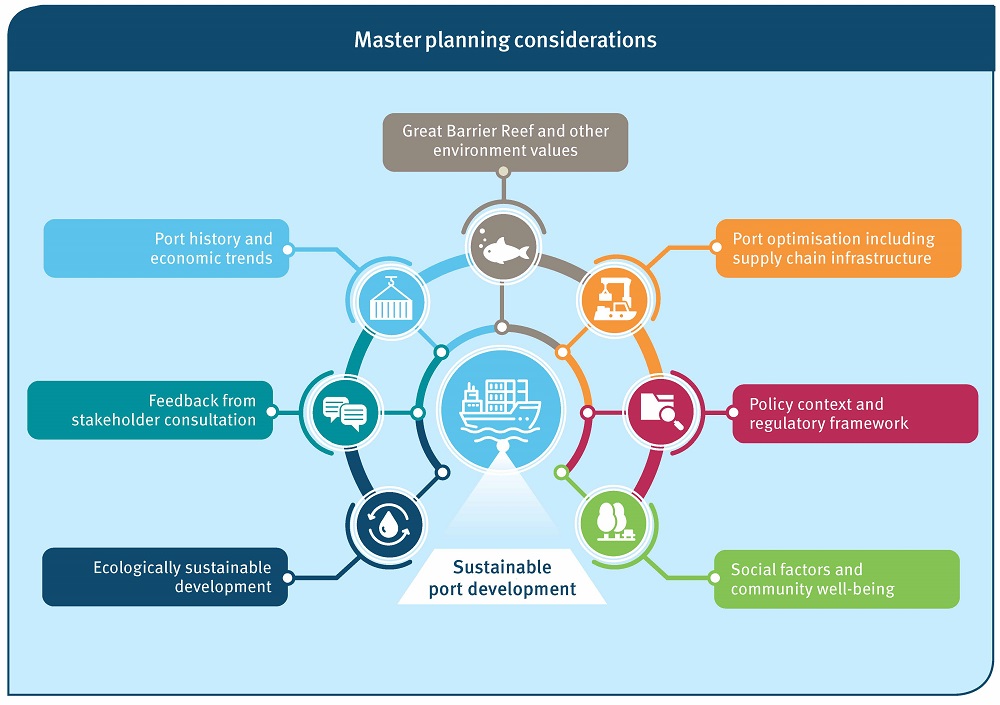
Priority port master planning guideline
The Priority ports master planning guideline has been developed to help the community and other stakeholders better understand priority port master planning. It outlines the master planning process and matters considered when developing a master plan.
Priority port master planning process
Priority port master planning includes statutory consultation requirements and the preparation of port overlays, as illustrated in the diagram below:
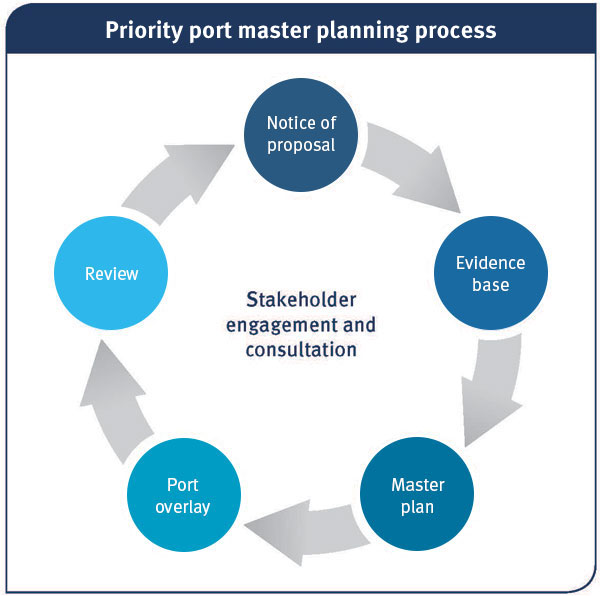
View the detailed master planning process
Implementing master planning
The Ports Act provides for the master plan to be implemented by a port overlay, which operates alongside existing planning instruments to guide future development to achieve the long-term vision of the master plan.
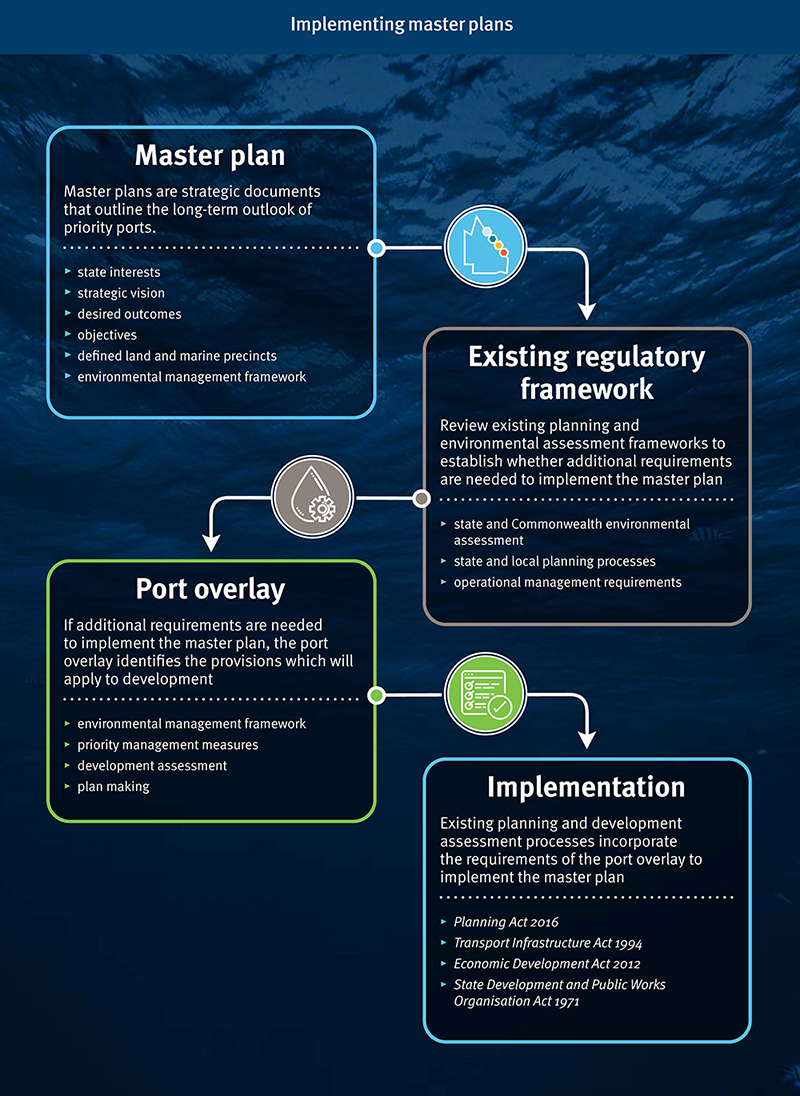
The Queensland Government will work with local government, port authorities, and state agencies to guide the implementation of the master plan at a local scale in an efficient and integrated way consistent with the Ports Act.
Status of priority port master planning
The current status of priority port master planning is:
Gladstone
- Master planning processes for the priority Port of Gladstone have been completed.
- Get further information about master planning for the Port of Gladstone.
Townsville
- Master planning processes for the priority Port of Townsville have been completed.
- Get further information about master planning for the Port of Townsville.
Hay Point/Mackay
- Master planning for the priority Port of Hay Point/Mackay formally started with a notice of proposal issued on 5 May 2021.
- Preliminary master planning processes for the priority Port of Hay Point/Mackay are currently underway.
- Get further information about master planning for the Port of Hay Point/Mackay.
Abbot Point
- Master planning for the priority Port of Abbot Point formally commenced with a notice of proposal issued on 5 May 2021.
- Preliminary master planning processes for the priority Port of Abbot Point are currently underway.
- Get further information about master planning for the Port of Abbot Point.
Document register
- Priority ports master planning guideline
- Draft priority ports master planning guideline (superseded)
- Priority ports master planning guideline (superseded) (prepared by the former Department of State Development)
- Report on public consultation - Draft guideline: master planning for priority ports (prepared by the former Department of State Development)
Further information
If you have any enquiries about priority port master planning, please contact the Sustainable Ports Planning team:
Email: SustainablePorts@tmr.qld.gov.au or write to:
Post: Sustainable Ports Planning
Transport Strategy and Planning
Department of Transport and Main Roads
GPO Box 1549
Brisbane Qld 4001
- Last updated 02 June 2022


